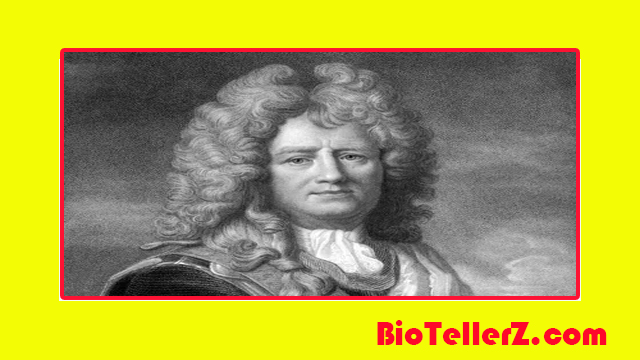Sébastien Le Prestre de Vauban, a French military engineer, was born on May 15, 1633, in Saint-Léger-de-Foucherest (now Saint-Léger-Vauban), France, and passed away on March 30, 1707, in Paris. He is credited with revolutionizing the art of siege craft and defensive fortifications. He participated in every French war under Louis XIV (1643–1715).

Young Age
Vauban was born into a very humble petty nobility family. In 1651, when the infant Louis XIV was about to mount a coup, he enlisted as a cadet in the regiment of Louis II de Bourbon, prince de Condé.
It was soon apparent what Vauban was capable of. He gained notoriety by defending towns in the Argonne region and by assisting Condé in taking Sainte-Menehould following a siege. He was taken into custody by the authorities in 1653. He received honorable treatment and was soon convinced to change sides and support the royalists in retaking Sainte-Menehould. He was wounded twice while under siege in 1654. In 1655, he was admitted to the corps of officers that was being gradually developed outside of the traditional military hierarchy for specialized work on fortification and siege craft as a “king’s ordinary engineer.”. He participated in operations against several forts and cities between 1655 and 1657 before serving as the chief engineer at the siege of Gravelines in 1658.
Technological Developments
The king’s participation in the sieges Vauban was in charge of during Louis’ Dutch War (1672–1679) brought Vauban prominent glory. During the Maastricht siege (1673), he used a complex system of “parallels,” i. e. Trenches parallel to or near the perimeter of the defenses, connected by radical zigzag trenches, protected the approach from the artillery fire of the defenders fairly well. Success at Maastricht led to a promotion and financial aid that allowed him to purchase the Bazoches château, which was close to the Vauban family seat. His promotion to the position of maréchal de camp, which is the equivalent of brigadier general, in 1676 was the result of subsequent victories. Against the advice of Louvois and five marshals, he convinced the king to approve a daylight assault during the siege of Valenciennes in 1677, in part because the attackers’ traditional nighttime assault frequently resulted in unintentional gunfire. He got more money for taking Valenciennes.
In order to inspect or improve fortifications, Vauban conducted a second thorough tour of the French frontiers in 1680–1681. He erected a lavish fortress with cutting-edge architecture for Strasbourg (1681). He oversaw the siege of Luxembourg in 1684 before redesigning its defenses. His (1687) plan for the fortification of Landau in Bavaria is regarded by some as his best work.
Writings
Vauban was a tireless individual. He diligently wrote about topics of public interest in his spare time while between assignments and while recovering from illness. Many of these writings were compiled by him in manuscript volumes under the collective name Oisivetés (“Leisures”), some of which were related to his line of work while others were not. When he wrote his treatises De l’attaque et de la défense des places (“On Siege and Fortification”) in 1705-1706, many interpretations of his fortification systems had already been published during his lifetime. They were reprinted in 1737 after their initial publication, which took place. The wisdom of resettling exiled Huguenots in France (1689), canals and inland navigation routes, maritime privateering, the geography of the Vézelay district, forestry and pig breeding, overseas colonies, and international affairs, particularly the political and strategic concessions that could be made for a just peace (1706), are just a few of the topics he published works on. He also published works on a wide range of other topics. His most significant “leisure” activity was the Project for a Royal Tythe, or General Tax, which was published anonymously in 1707 and called for the replacement of nearly all. 10 percent land and trade tax, from which no one should be exempt, should replace all of France’s current levies. By offering a ton of statistical evidence to back up his claims—something that was essentially unheard of at the time—he established the use of statistics in economics.
Personality
Vauban had a medium height and a square build. Despite being unassuming and straightforward, he had a martial appearance and unkempt manners that concealed his kindness and genuine willingness to help others. He frequently let other officers take the credit for the successes of his own heroic efforts because he always put saving the lives of soldiers in danger before his own. “The most honorable and virtuous man of his age,” was how Vauban was described. duc de Saint-Simon, a renowned Louis XIV historian who never wasted praise, described him as “dot incapable of lending himself to anything false or evil.”. “.
However, the French government—which is excessively committed to the tax farming system (i.e. e. , who were reluctant and even unable to revoke the privilege classes’ exemptions due to their dependence on them, and who lacked enthusiasm for fundamental reforms—restricted the publication of his book. Vauban was devastated by this rejection, but it is untrue that his book caused Louis XIV to disregard his earlier achievements.
Related Posts
Donald Trump – Best Guide in 2023
